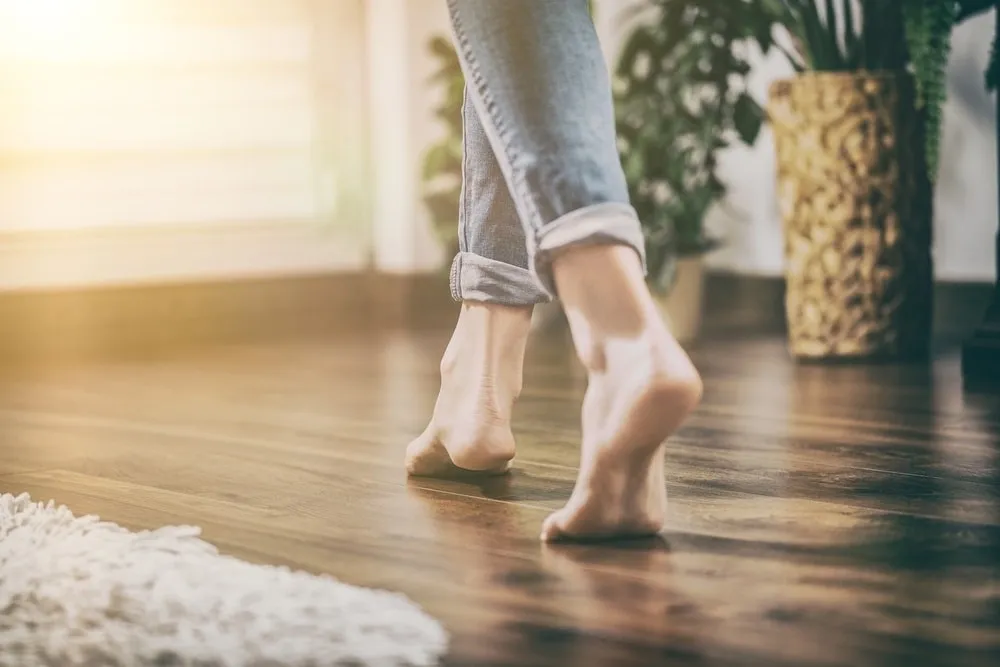Floor coverings used in building construction
In most cases, the flooring systems in a house are risk-free and by the generally accepted building requirements. However, even if the floor system is appropriate, movement due to deflection might generate vibrations, creaks, and other unintended results. This is the case even if the floor is perfectly level.
Many homes are sensitive to floor vibrations due to heavy foot traffic, which is frequently a subjective idea because what feels fine for one person might be uncomfortable for another. Many homeowners are often sensitive to floor vibrations as a result of heavy foot traffic. A creaky floor can sometimes be mistaken for sounds and squeaks coming from the floor. Complaints about the floor are frequently the result of seemingly innocuous shifts in how it is used or in the distance between the joists.
The homeowner and builder of a home being constructed from the ground up will want to consider floor vibrations when choosing the frame of the structure to minimize any issues that may arise during the construction process.
The factors that contribute to floor vibrations
Most of the time, vibrations in the floor are caused by human activity, vibrating machinery, or external factors. Walking is the most typical activity that causes vibrations on the floor, and most people consider it to be nothing more than an annoyance. The good news is that machine-induced vibrations, such as those caused by a running washing machine, can be eliminated by using isolating mounts or motion armrest pads.
The most common cause of floor vibrations is a floor that is framed in wood. This is because wood floors experience tiny deflections up and down as the joists are loaded and unloaded. Even though this kind of floor is meant to hold things like people, furniture, and major appliances, it is still possible for it to vibrate over time if certain movements are made on it. In homes with more recent construction, wood flooring installation uses wood screws and construction adhesive, both of which can help stabilize vibrations.
Additionally, joists in these homes are engineered to limit any deflections that may occur. On the other hand, the nails that hold the subfloors in place might become loose over time in older homes with subfloors that were nailed in. Vibrations can be caused by walking over a floor with a loose subfloor or by operating an item such as the dishwasher
Preventative measures to be taken against floor vibrations
The first step for homeowners is to pinpoint the areas of the floor that require maintenance. Employing a professional to locate the source of the issue and provide guidance on how to address it is a straightforward option. If you have an idea in general of where the vibrations are coming from, note the regions where you feel them so that you can quickly find them. If the vibration issue is to be fixed, it will first be necessary to discover the source of the problem and then gain access to the region beneath the floor.
It is possible for a contractor to cut a little hole in the ceiling that can be patched up underneath these locations so that the engineer or the contractor can investigate potential causes. The structural blueprints of the current building are another useful tool for locating potential problems. After that, the contractor and the engineer can collaborate to come up with a solution, which might include more blocks between the joists, wood screws, adhesives, or even additional joists or supports.
Deflections and vibrations are taken into account in new construction to a greater extent than they were in earlier designs; as a result, this generally results in fewer problems when building something from the ground up.
Nevertheless, you are free to discuss these worries with your engineer anytime. They can provide advice on whether or not raising the size of new joists, reducing specific spans, or designing for a bigger live load than is required will help decrease the effect. According to the tests’ findings, raising the joists’ depth and the thickness of the sheathing can significantly minimize floor vibrations. One further thing that can be done to cut down on vibrations is to ensure that the floor sheathing is glued down and that screws, not nails, control the long-term bounce.
Alternate Joist Systems
In addition, brand-new solutions have been developed specifically with this issue in mind. Alternate joist systems are a good illustration of this because they allow for longer allowable joist spans while simultaneously reducing the amount of wood material used and deflection across these spans This is especially helpful for new buildings. The program employs algorithms to establish a correlation between the vibrations on the floor and the level of consumer pleasure. The builder will then use the information to control the joist depth, the joist span, the joist series, and the floor sheathing thickness.
TJI joists were developed to ensure high-performance flooring, particularly in residences that have recently been built from the ground up TJI joists are resistant to warping, bending, and shrinking, which are three of the most common factors that contribute to creaky and vibrating floors. They provide a supply of framing that is less difficult to set up and is available in long, lightweight lengths. There are many advantages to utilizing TJI joists for your floor plans, including the following:
Consider the vibration factor any time you construct a new floor or building, even if you have no plans to do so. You are, however, free to address this matter at a later time. However, additional time and effort will be required. When it comes to finding a solution to this problem, you could even require the assistance of experts at some point.
For this reason, it is preferable to fix it sooner, preferably during the construction phase itself.
Get in touch with Superb Engineer as soon as possible because we have all the experienced and knowledge necessary to assist you! because of our extensive knowledge and high level of professionalism, you won’t need to be concerned about any engineering-related issues when working with us.



